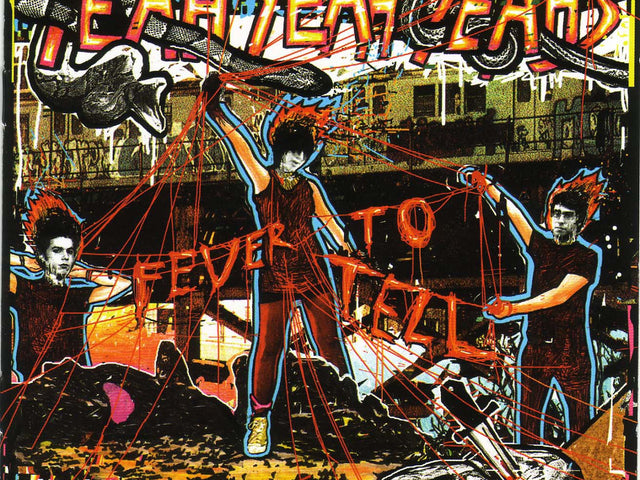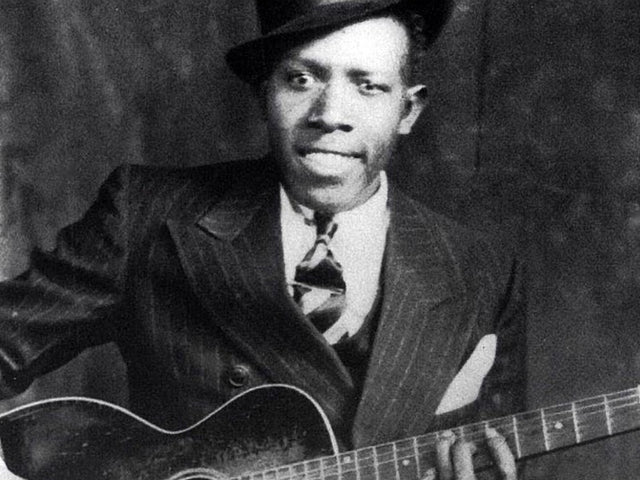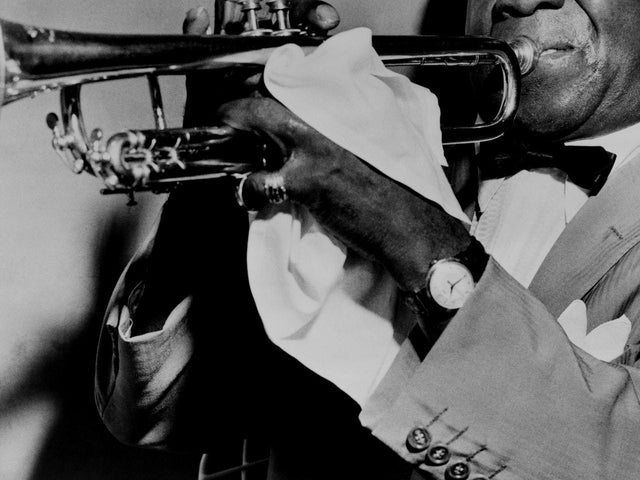Die 10 besten Emo-Revival-Alben, die Sie auf Vinyl besitzen sollten
Das Wort “Revival” in diesem Genre scheint künstlich, weil es das ist. Die Wahrheit ist, dass Emo niemals gestorben ist, es hatte nur einen Herzinfarkt. Von 2002 bis 2010 gab es erheblich weniger Menschen, die diese Musik mit irgendeiner Art von Konsistenz machten, aber es ist nie ausgestorben. Ich bin ein natürlicher Zyniker und vielleicht die letzte Person, die über die Verwendung des Begriffs “Emo Revival” beraten würde, aber beim Schreiben dieser Liste dachte ich, dass es vielleicht nicht die Menge der Musik ist, sondern die tatsächlichen Aspekte der Kunst selbst. Ich mag es immer noch nicht, diesen Begriff zu verwenden, aber ich bin jetzt mehr in Frieden damit.
nDer Akt des Plattenhörens war für mich immer “emo”. Es geht darum, mich selbst zu isolieren, in Gefühle für vierzig Minuten bis eine Stunde einzutauchen und darüber nachzudenken, was ich aufnehme. Was könnte eine bessere Möglichkeit für einen Typen sein, seine Zeit allein zu verbringen, als anderen Typen zuzuhören, die über Einsamkeit singen? Wenn das dein Ding ist, sind dies die zehn besten Platten, um genau das zu tun.

My Heart To Joy: Seasons In Verse
If you want “emo revival” in one LP, this is the one. MHTJ mixed the passive twinkle that was dominating the sound at the time with a signature post-hardcore urgency. Seasons In Verse is as anxious as it is spacy. It’s the soundtrack to wandering a neighborhood in the summer, chainsmoking and wondering what happens after college. It’s got this balance of crushing drumbeats and huge ringing that offset the lighter guitars over the top and the fat bass lines that compliment them. I’m not ever endorsing that your band should throw a Guided By Voices cover into the flow of the record, but MHTJ’s cover of “Gold Heart Mountaintop Queen Directory” is a frayed version of the original that slides right in and feels natural. In the hands of Guide by Voices, it’s a low-fi gem. In the hands of MHTJ, it’s another anthem on a record full of cathartic basement-show bangers.

La Dispute: Somewhere at the Bottom of the River Between Vega and Altair
If emo is a for high-schoolers, this is the prime example of Drama Kid Emo. This is a record about showmanship. Not literally, but it’s overblown in the best sense. Emo, in and of itself, is a goofy genre full of too-serious dudes who make great music. La Dispute had the good sense to toe the line of “progressive” and “out there” on Somewhere... by tossing exaggerated heartbreak over dancy drum fills (“Andria”) as many times as they put them on some of the best guitar work that the genre ever offered (“Bury Your Flame”). The latter track provided the release that only an accusatory fingerpoint at a live show could offer while tracks like “The Castle Builders” are introspective riff machines. After eight years, the album is a little messier than anyone remembers but it’s disorganized in the way that only can be made by a band that is trying to do everything it can to convey what they want to. To that point, it’s on a double LP with only sides A, B, and C filled with music. The D-side is either blank or has an etching on it, depending on the pressing, which is the perfect compliment to the 12-minute opus of “The Last Lost Continent” filling up side C. It’s the mark of a band who made a name out of “Doing the most.”

Touché Amoré: Parting The Seas Between Brightness And Me
For some context to this genre, there’s a ton of Bandcamp pages out there with one demo release that sounds exactly like Touche Amore’s demo 7” and there’s even more that release one more EP that sounds like leftovers off of this record. It’s emo revival for hardcore kids by hardcore kids. Opening track “~”(“Tilde”) is legendary at this point with the forever-quotable “If actions speak louder than words, I’m the most deafening noise you’ve heard.” Vocalist Jeremy Bolm left his heart all over this record about death and touring and the lyrics will linger forever in the tattoos of hardcore kids across the world. Deathwish Records released this record which meant a lot for the sound, but also meant a lot in terms of legitimizing emo revival to an audience that might have thought itself too hard for the genre.

Dikembe: Broad Shoulders
Tiny Engines was a real emo powerhouse through the genesis of the emo revival. The South Carolina label put out several records that could’ve made this list, but Dikembe’s Broad Shoulders was the one that stuck out the most. Dikembe shared members with Wavelets, who also had one album on Tiny Engines before calling it a day, and the only thing they really had in common was lead singer Steven Gray’s voice. The Wavelets album is good, but the cool thing about Dikembe is the juxtaposition of this really loose sound with these lyrics that are so uptight and anxious. The guitar lines are infectious and the vocal melodies dance around forever. Side note: I was going to suggest their debut EP, Chicago Bowls, but the 7” release couldn’t get permission on the Freaks and Geeks samples at the beginning and end that are iconic at this point.

Glocca Morra: Just Married
Do you have feelings but also want to seem like you’re way too cool to have them? Then throw this record on and inhale your illicit substance of choice. Glocca Morra made twinkly fuzzed-out stoner punk that always sounded like coming home from a house party after two too many beers. “Just Married” is the end of the night record while you wait for a Totino’s Party Pizza to heat up in the microwave and wonder why you didn’t talk to that girl from your Digital Media Storytelling class who was also at the party. Drink another PBR and eat the pizza and sink into the jagged riff on “Broken Cigarettes.” Chuckle at the sample at the beginning of “Eat The Fucking Snow.” Pass out and repeat next Saturday.

Snowing: I Could Do Whatever I Wanted If I Wanted
I guess this record is the “real heads know” pick of all of this. Snowing, in my opinion, is a “you had to be there for it” band to a huge extent. You had to be in that scene at that time to really get what was so cool about them. And maybe that’s still the case. Maybe it’s not going to age as well as some of these other records and maybe my pick is clouded by nostalgia for a different time and place in my life than where I am now. It’s an angular and abstract record that is very jerky but represented a huge part of the sound and pressed real hard into its defining characteristics. It’s the emo revival with a brick on the gas pedal. It’s the most emo revival record to ever revive emo, and that’s why it’s on this list. You know how Tostitos makes those “Hint of Lime” chips that are overtly lime-flavored to where it isn’t a hint, it’s a dissertation on lime? This is that for emo.

Everyone Everywhere: Everyone Everywhere 2012
Let me put you up on game: This is the best record that the emo revival has to offer. Insanely catchy with sharp lyrics and the smartest songwriting around. It’s a tough find to get on vinyl but it’s worth every penny. It’s never not confusing when a band has two self-titled records in iTunes so not only do you have some convenience when it’s on vinyl, but you also want to hear the sick bass tone at the start of “The Future” on wax because there’s no substitute. Treat yourself. Spend the money on Discogs and get the beautiful teal-ish green that goes along with the album art. It’s always so aesthetically pleasing when the art and color variants match. Everyone Everywhere were just the best at making a whole product that fit together and sounded as good as it looked. EE2012 was a perfect storm of emo’s most charming qualities. Call off the search, this is most of what you could ever want.

Crash of Rhinos: Distal
Crash of Rhinos made progressive emo. That’s the only way to put it. “Progressive” feels like a boring catch-all term in music criticism for something vaguely innovative about a band but Crash of Rhinos really played with a sound that borrowed heavily from the old school and gave it new life. It’s not “prog,” per say, but they didn’t shy away from long multi-part songs with odd time signature switches that still made a ton of sense. “Stiltwalker” starts out with a cock-rock riff and throttles into this world-ending verse before bringing it back in. The outburst is short-lived but you don’t ever feel safe inside this record. These songs are as beautiful as they are punishing. It’s as jarring a shift in dynamics as any post-rock album. The other thing that sinks in six years after its release is how thick the drums sound. It’s not a sludgy album but it’s vicious. There’s a lot to digest. Distal’s 2013 follow-up, Knots, is just as heavy but a little more straightforward, making this the more rewarding one in the long run.

Tigers Jaw: Tigers Jaw
Quintessential, ubiquitous classic exercise of the genre. This isn’t the best record ever but if you don’t own this at some point of your emo collecting career, you’ve failed to understand what this whole thing was about. It’s a fun record that’s serious but provides so many good moments. Moments that seem disposable but define the sound of everything going on around it and set the precedent for a ton of releases after. That crunchy riff at the beginning of “I Was Never Your Boyfriend” is something 90 percent of bands in the scene wish they could’ve written. It’s not confident in every step it makes, but confidence isn’t what makes this genre, authenticity does. This record sounds genuine and never feels like it’s trying too hard to be one thing or the other. It’s Tigers Jaw at their most vulnerable and heartfelt, but also at their most influential.

Title Fight: Shed
Just as influential as Tigers Jaw’s s/t but in a totally different way, Shed is about having feelings and also making hard-as-nails bangers out of them. Say what you might about some false nostalgia for Revelation Records-era riffs and aesthetic, Title Fight pulled a transfer from being derided as pop-punk into a heavier emo/alternative rock act that set off a real shift in sound for a lot of acts in the genre. The influence that Walter Schreifels’ production lends is undeniable, as this record owes as much to Quicksand and Rival Schools as it does to Gorilla Biscuits. Shed is the record that got the emo revival to not to be afraid to make the music as powerful as the emotion behind it.
Related Articles
Trete dem Club bei!
Jetzt beitreten, ab 44 $Exklusive 15%-Rabatt für Lehrer, Studenten, Militärangehörige, Gesundheitsfachkräfte & Ersthelfer - Lassen Sie sich verifizieren!










